LEDs looking pretty
I haven’t really used LEDs all that much other than as power indicators or in a joule thief, perhaps it time to make some pretty flashy things. 😀
I went searching for some LED flashing circuits that would be able to have at least 4 LEDs with minimal components and came across 2 that I like, both using schmitt trigger oscillators, one fades LEDs in and out and the other feeds a BCD to 7 segment driver IC to flash 7 LEDs semi-randomly on and off.
Fader [HERE]
Random flasher [HERE]
LED Fader
The fader circuit uses 1 schmitt trigger for each LED and since schmitt trigger ICs usually come with 6 triggers, it wasn’t going to be a problem to have 6 LEDs all fading in and out at different rates. A down side of the fader circuit is that it never fully turns on the transistors/LEDs, at most the LEDs will only have 4mA through them.
Since I want the LEDs to fade in and out at different rates I can’t use the same resistor/capacitor values for all the oscillators, here’s a table of the resistor values used for each oscillator, capacitor values are the same for all (2.2uF / 22uF).
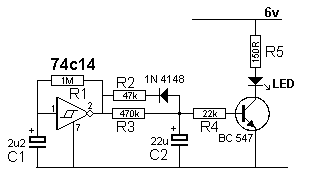
| LED | R1 | R2 | R3 |
|---|---|---|---|
| 1 | 1M | 47K | 470K |
| 2 | 150K + 270K | 22K | 150K |
| 3 | 270K + 470K | 47K | 470K |
| 4 | 470K + 1M | 47K | 470K |
| 5 | 470K | 47K | 270K |
| 6 | 1M + 1M | 100K | 470K |
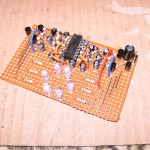
|
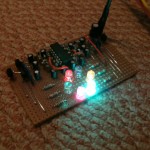
|

|
Random LED Flasher
The description for the random flasher circuit mentions that the slight differences between the schmitt trigger oscillators will be enough to make it random, but after building it and leaving it for about an hour it was still flashing the same LEDs so I changed two of the 47K resistors, one to 68K and the other to 33K.
I also added 2N3904 transistors on the 7 outputs to drive 50mA high brightness LEDs since the 7 segment decoder IC I used (74HC4543) is only rated for 20mA.

|
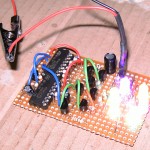
|
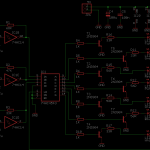
|

Comments
Skip to comment form